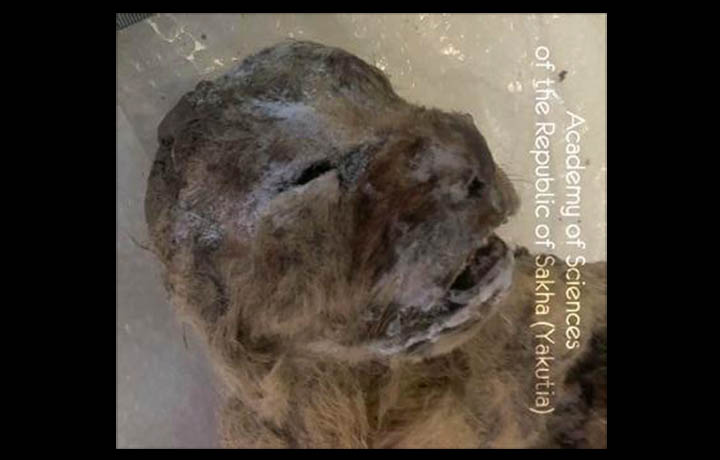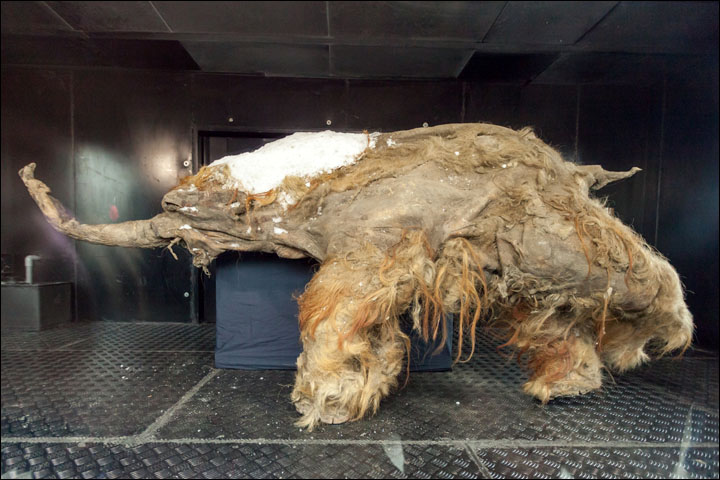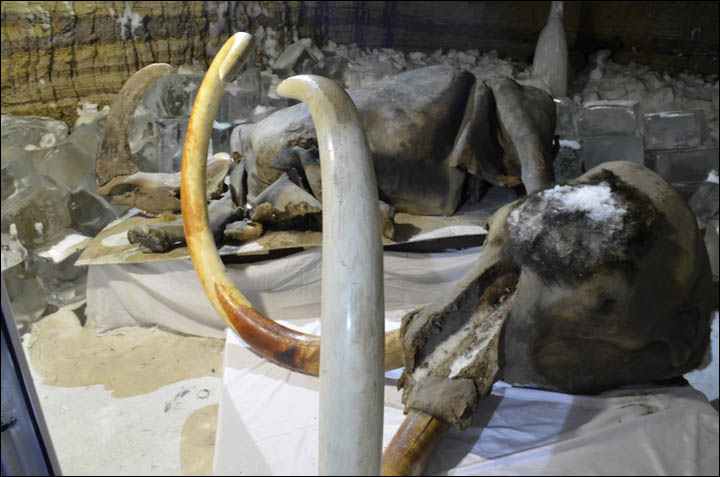
+- WildFact (https://wildfact.com/forum)
+-- Forum: Information Section (https://wildfact.com/forum/forum-information-section)
+--- Forum: Extinct Animals (https://wildfact.com/forum/forum-extinct-animals)
+---- Forum: Pleistocene Big Cats (https://wildfact.com/forum/forum-pleistocene-big-cats)
+---- Thread: Freak Felids - A Discussion of History's Largest Felines (/topic-freak-felids-a-discussion-of-history-s-largest-felines)
RE: Freak Felids - A Discussion of History's Largest Felines - tigerluver - 10-08-2015
Regarding height and body length estimations, I've yet to see a source (except Christiansen and Adolffsen 2007) that a gave a value which I can mathematically verify. Most looked at a single bone which they assumed was large, and extended it to the easy 120 cm x 200 cm figure. However, in terms of M. kabir, Turner and Anton's estimate was (coincidentally?) on point, as a 417 mm does come around to such a value.
I estimated M. kabir somewhere in this thread using Christiansen's equations if anyone is interested.
Cave lion cubs found in Russian permafrost - Siegfried - 10-27-2015
This was posted in another forum. Interesting, right?
http://siberiantimes.com/science/others/news/n0464-meet-this-extinct-cave-lion-at-least-10000-years-old/
WORLD EXCLUSIVE - Meet this extinct cave lion, at least 10,000 years old
By Anastasia Koryakina
26 October 2015
'Sensational' find of two cubs, the best preserved ever seen in the world, announced today.

*This image is copyright of its original author
The cave lions were almost perfectly preserved in permafrost and could be much older. Picture: Academy of Sciences of Yakutia
The unprecedented discovery of the ancient predator was made this summer in the Sakha Republic, also known as Yakutia. The cave lions were almost perfectly preserved in permafrost and could be much older.
The Siberian Times is proud to be working with the Academy of Sciences of Yakutia which will introduce the cubs properly at a presentation to the Russian and international media in late November.
Along with the two lions, paleontologists will also show other Pleistocene animals preserved by ice in this vast region, the largest and coldest in the Russian Federation. Among these will be the famous woolly mammoth Yuka, the 'Oimyakon' mammoth, the carcass of a Kolyma woolly rhinoceros, and Yukagir bison and horses.
Interested media organisations are invited to use the contacts below if they wish to attend.
The cave lions - Panthera spelaea (Goldfuss) - lived during Middle and Late Pleistocene times on the Eurasian continent, from the British Isles to Chukotka in the extreme east of Russia, and they also roamed Alaska and northwestern Canada. The extinct creatures were close relatives of modern Afro-Asiatic lion.
Finds of their remains are rare: today's announcement about the existence of the pair is coupled with the confident claim that they are best preserved ever unearthed in the world.

*This image is copyright of its original author

*This image is copyright of its original author
[b]Along with the two lions, paleontologists will also show other Pleistocene animals preserved by ice in this vast region, the largest and coldest in the Russian Federation. Picture: Academy of Sciences of Yakutia, RGO[/b]
[b]Full details will be given at the presentation in November, including the first results of research into the lions.
[/b]
Previously, only fragments of carcasses, parts of skeletons and individual bones had been found. Until now, in Yakutia, only skulls, some teeth and bones were unearthed which has prevented scientists having more than an approximate image of the extinct creature.
Like other ancient animals, the cave lion became extinct: research on the two cubs could help to explain why they died out around 10,000 years ago, since the animal had few predators, was smaller than herbivores, and was not prone to getting bogged down in swamps, as did woolly mammoths and rhinos. One theory is a decline in deer and cave bears, their prey, caused their demise.
[b]'The find is sensational, no doubt,' said a source close to the discovery. It is known the remains are free of dangerous infections such as anthrax following initial microbiological analysis, but no other significant details or pictures will be released before the presentation.[/b]
RE: Cave lion cubs found in Russian permafrost - Spalea - 10-27-2015
Impressive discovery indeed ! To find such remains of a big predator, i.e. an animal much less numerous than a big herbivorus, is quite miraculous.
RE: Cave lion cubs found in Russian permafrost - GrizzlyClaws - 10-27-2015
It is extremely fascinating.
And based on the appearance of the frozen mummy, those Siberian Cave lions should look like the modern Asian lions with the long winter coat.
No doubt they were the true lions.
RE: Freak Felids - A Discussion of History's Largest Felines - tigerluver - 10-28-2015
I merged the thread into here.
If it's not a hoax (it shouldn't be), I'm speechless with excitement.
No stripes on the coat it seems, I wonder what the cave painters were looking at.
RE: Freak Felids - A Discussion of History's Largest Felines - Black Lorren - 10-29-2015
It seems that lions were always at home even in this continent called ASIA.
Epic find Siegfried!
RE: Freak Felids - A Discussion of History's Largest Felines - Pckts - 10-30-2015
(10-29-2015, 10:14 PM)Black Lorren Wrote: It seems that lions were always at home even in this continent called ASIA.
Epic find Siegfried!
The world has changed a lot in the time they walked the land, continents were not the same as they are now. Shape, size, terrain, climate etc.
RE: Freak Felids - A Discussion of History's Largest Felines - tigerluver - 10-31-2015
Sotnikova and Nikolskiy work with a few more fossils specimens of P. spelaea from Russia is attached. Don't let pelt color influence you too much, lion-clad and a subspecies of lion are different classifications. They also have a different take on modern lion evolution.
The abstract:
"Well-preservedskulls of Late Pleistocene Panthera spelaea are described from two geographically distant regions of Russia situatedin the Russian Plain andNorthern Siberia. The resemblance of the studiedmaterial with contemporaneous fossil lions from Alaska is established. The cranial morphology of P. spelaea confirms its phylogenetic position within the lion group, whereas many of the characters supporting the cave lion’s relationship with the tiger are primitive. Both living andcave lions are advancedrelative to the Middle Pleistocene P. fossilis in having larger upper incisors andmore inflatedbullae. P. spelaea also possesses the following advanced characters in common with the living lion: widened muzzle in the canine and P2 areas, wide nasal bones, relatively short pre-orbital part of the skull, laterally widened mastoid area, V-shaped form of the posterior tip of the frontal process of maxillary bone, and reduced cusp on the protocone bulge of P4. These conditions establish P. spelaea as a distinct species."
RE: Freak Felids - A Discussion of History's Largest Felines - Black Lorren - 10-31-2015
(10-30-2015, 10:15 PM)Pckts Wrote:(10-29-2015, 10:14 PM)Black Lorren Wrote: It seems that lions were always at home even in this continent called ASIA.
Epic find Siegfried!
The world has changed a lot in the time they walked the land, continents were not the same as they are now. Shape, size, terrain, climate etc.
I agree with you 100%, but 10.000 years ago the Asian continent still looked the same, nothing moved out of his place.
RE: Freak Felids - A Discussion of History's Largest Felines - Black Lorren - 10-31-2015
(10-31-2015, 12:06 AM)tigerluver Wrote: Sotnikova and Nikolskiy work with a few more fossils specimens of P. spelaea from Russia is attached. Don't let pelt color influence you too much, lion-clad and a subspecies of lion are different classifications. They also have a different take on modern lion evolution.I always said that the tawny coat is not a set in stone trait for the lions, even from them prehistoric times.
The latest 10.000 yo frozen tawny lions discovered in Siberia should be taken with a grain of salt!
My two cents.
RE: Freak Felids - A Discussion of History's Largest Felines - tigerluver - 10-31-2015
Krillova has found red cave lion hair earlier this year, the paper is posted in here somewhere. The author stated they'd follow up on the hair eventually.
RE: Freak Felids - A Discussion of History's Largest Felines - Black Lorren - 10-31-2015
Red hair, interesting!
No chance it was a tawny / redish hair color?...or maybe it was some hair from a tiger stripe of that time.
RE: Freak Felids - A Discussion of History's Largest Felines - GrizzlyClaws - 10-31-2015
(10-31-2015, 12:53 AM)Black Lorren Wrote: Red hair, interesting!
No chance it was a tawny / redish hair color?...or maybe it was some hair from a tiger stripe of that time.
It could be, as there were also some Pleistocene tigers who wandered in Siberia at that time.
From the frozen mummy, the Cave lion's fur is tawny yellow/brown like the modern lions.
Some Pleistocene tiger's fossils seemed to have mixed up with the Cave lion's.
RE: Freak Felids - A Discussion of History's Largest Felines - Black Lorren - 10-31-2015
(10-31-2015, 01:37 AM)GrizzlyClaws Wrote:(10-31-2015, 12:53 AM)Black Lorren Wrote: Red hair, interesting!
No chance it was a tawny / redish hair color?...or maybe it was some hair from a tiger stripe of that time.
From the frozen mummy, the Cave lion's fur is tawny yellow/brown like the modern lions.
Yes i agree, surprisingly, the fur color is almost identical of a modern African lion but a bit darkish, more usually found in the lions of India.
RE: Freak Felids - A Discussion of History's Largest Felines - GrizzlyClaws - 10-31-2015
The modern Asian lion and African lion are more closely related to each other than to the Cave lion.
However, the Cave lion might resemble more to the Asian lion than to the African lion maybe due to the morphological convergence, as both lion species used to live in Eurasia.